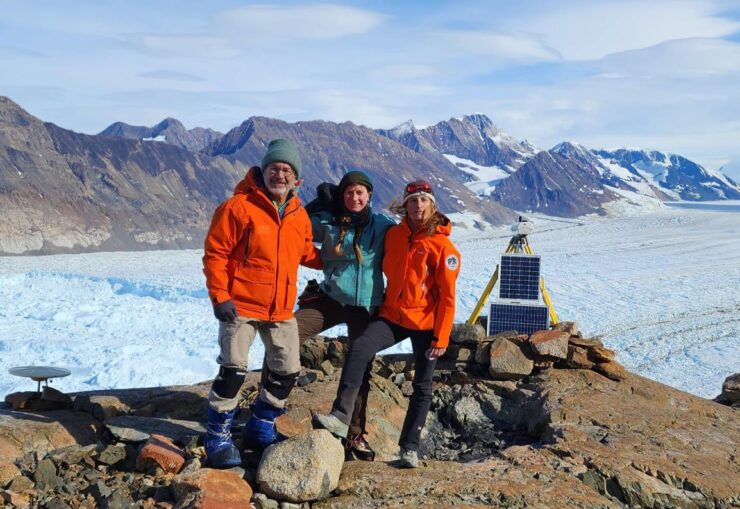SCAR Fellow Liliana Sofía Margonari has provided a report on her Fellowship project titled “Outlet Glacier Monitoring in the Larsen B Embayment, Eastern Antarctic Peninsula.” The Fellowship was hosted by Dr Ted Scambos at the Cooperative Institute for Research in Environmental Sciences (CIRES), University of Colorado, United States. At the time of her Fellowship, Liliana was a PhD student at the Argentine Antarctic Institute and the University of Buenos Aires, Argentina.
Following the disintegration of the Larsen B Ice Shelf in 2002, its tributary glaciers—including Crane and Hektoria—underwent significant retreat, thinning and mass loss. In 2011, landfast sea ice formed in the Larsen B embayment, temporarily moderating this ice loss. However, its collapse in early 2022 reactivated glacier retreat, with Crane Glacier retreating approximately 10 km in just over a year. Liliana’s project aimed to monitor glacier dynamics and calving events over an extended period, and to assess their relationship with environmental factors such as sea ice concentration, temperature, wind, and föhn events.
During the 2024 austral summer, Liliana joined the CIRES glaciology team and researchers from the Argentine Antarctic Institute on a field campaign to Crane Glacier. The team installed three stereoscopic cameras, a precision GNSS station, an automatic weather station, and two on-glacier GPS units to measure glacier flow and environmental conditions. Although some equipment was damaged shortly after installation, the GPS units on the glacier provided consistent data throughout the monitoring period. These data, alongside satellite imagery, are being used to study glacier dynamics following the loss of fast ice cover.

Initial findings show that the glacier’s motion remained steady during the first few months post-installation, but became more variable following several significant calving events in autumn 2024. While the average velocity (2.6 m/day) remained stable, episodic acceleration and deceleration were observed and appear to correlate with calving. Data collection became more sporadic during winter, likely due to snow accumulation on equipment. Further analysis is planned once spring conditions allow for snow ablation and data recovery.
The Fellowship provided Liliana with the opportunity to learn new methodologies and collaborate closely with experienced glaciologists such as Ted Scambos and Naomi Ochwat. She also expanded her academic network, exchanging ideas with peers and researchers across multiple disciplines.
Reflecting on her experience, Liliana said:
